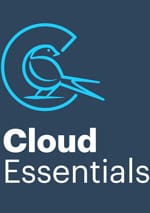Our first article in this series introduced the “what” and “why” of Zero Trust. Today, we’re turning our attention to the preliminary stages of “how to”.
Transitioning to Zero Trust isn’t like flipping a switch. It takes some pretty extensive groundwork and planning. In our experience, the factors below are some of the most critical during this process if you’re going to achieve a truly effective (and value-adding) Zero Trust journey.
1. Get buy in from the top
Deploying Zero Trust often involves fairly significant restructuring of policies, processes, and IT infrastructure. That can be a tough sell to higher-ups when they don’t fully appreciate the essential nature of Zero Trust in today’s environment (or the side benefits it brings).
It’s invariably significantly easier to get the necessary approvals (budgetary and otherwise) when you take the time to convey these details up the chain of command.
2. Prepare to play the long game
Depending on your starting point, achieving a mature Zero Trust posture could take three to five years. And even the most mature posture is never exactly “final” thanks to the constantly evolving threat and technology landscape.
It’s important to get comfortable with the idea that Zero Trust is a long-term journey that will need regular attention for the foreseeable future.
3. Don’t ignore people and processes
It’s a common misconception that Zero Trust is purely technology-driven. In reality, people and processes are also integral to its success. We highly recommend getting a business analyst to ensure your employee interactions and business processes are successfully included in your Zero Trust transformation.
4. Bring users on board early
Knowing what to do isn’t the same as understanding why you’re doing it. That’s why Zero trust strategies that include educating and informing users are invariably more successful.
The sooner your users understand the risks and threats Zero Trust addresses, and how their own activities affect things, the less push-back you’ll receive over tighter access controls and permissions.
(Bringing users up to speed on security strategies is always a good idea, regardless of your security model. Knowledge is an essential weapon against insider threats which make up a significant proportion of all security breaches.)
5. Remember the big picture
Zero Trust is just one piece of your organisation’s technology puzzle. Don’t lose sight of its ability to contribute to your broader IT vision.
A well-established Zero Trust culture enables far more agile and responsive IT. That means easier adoption of new technology and better support for business change – all while minimising risk in an evolving environment.
6. Know your challenges
Going Zero Trust is not without its challenges. Like most things in life, forewarned is forearmed.
Legacy systems
Legacy systems and environments are one of the bigger hurdles for adopting a Zero Trust model. They don’t have to be a complete barrier to entry, however.
Ultimately, the goal should be to consolidate as much as possible within your Microsoft environment, optimising use of native security capabilities to streamline your access controls and permissions. Obviously, that’s not going to be an overnight process, though.
With that in mind, it can be better to exclude legacy systems, initially, to avoid delaying the start of your Zero Trust journey. (Sooner is definitely better than later, even if you start small.) Their migration can then be planned into future budget rounds as you get further along your path towards Zero Trust.
Skills shortages
Demand for cyber-security skills is at an all-time high. Don’t let delays in securing in-house experts get in the way of advancing your Zero Trust strategy.
Short-term partners/contractors can be invaluable in the design and deployment of the required technology changes. Just make sure they work hand-in-hand with your in-house team to upskill your internal maintenance and support capabilities moving forwards.
Constant evolution
Even the most mature Zero Trust deployment requires regular attention to ensure its policies and processes keep pace with technology, threats, changing business structures and evolving workflows.
That’s a daunting prospect, but it’s a lot easier when Zero Trust is engrained in your company culture and security is always part of the conversation.
Need help laying the groundwork for a successful Zero Trust strategy? Book a Microsoft 365 Security Assessment and Roadmap session with our security experts and get your journey off to the strongest possible start.







